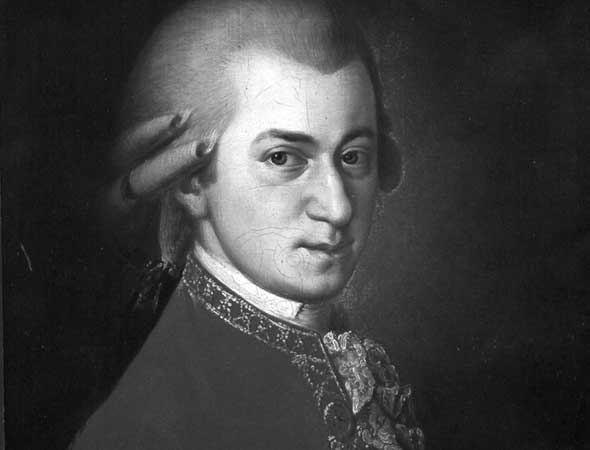MOZART (arr. Fobbes): Magic Flute Fantasy
by Jeff Counts
THE COMPOSER – WOLFGANG AMADEUS MOZART (1756–1791) – Mozart was working simultaneously on the Requiem, the clarinet concerto, his final string quartet, and two operas during the incredibly prolific year of 1791, his last on Earth. The drama of these final creations was matched only by that of his actual life and the ill health and mysterious visits of 1791 leant an air of urgency to everything Mozart produced. It was a furious dash to the finish, the finish of an existence cut far too short after 35 brief years. Theories about the cause of Mozart’s demise have varied over the years (rheumatic fever? acute miliary fever or the ridiculous but persistent typo of “military” fever?), but his wife Constanze believed he had simply worked himself to death. She would know.

THE HISTORY – Though he started it before La clemenza di Tito, Die Zauberflöte (The Magic Flute) was the last opera Mozart completed. It was a prime example of the popular dramatic style known as Singspiel (a blend of singing and spoken text) and an intellectually crafty allegory on Mozart’s own Masonic associations and beliefs. The highly unusual plot details the exploits of Prince Tamino who, lost and pursued by a demon in a foreign land, is rescued by servants of the Queen of the Night. After seeing a picture of the Queen’s daughter Pamina (and falling instantly in love with her), Tamino receives the eponymous instrument as a gift and sets off with the bird catcher Papageno (who has also been given a magic musical implement) to save Pamina from the evil Sarastro. Mozart would live to see Flute successfully staged and even conducted the premiere performances, but his death just months later would deprive him of knowing how lasting and important the work was meant to become. It is important to view The Magic Flute not as Mozart’s personal benediction or his farewell to opera but rather as the excited, forward-looking declaration of a young genius in his prime. This is the ambitious music of a man with plans for the future, not the last rites of one who felt time slipping and hoped he had said enough. Excerpts from this great masterpiece have been put to many uses in the centuries since. In the steps of violin virtuoso Pablo Sarasate, Belgian composer Robert Fobbes made an arrangement of themes from the opera in 2018 as a gift for his flautist friend and countryman Marc Grauwels. The Fantaisie paraphrases the best moments of Mozart’s drama and gives the solo flute the unenviable job of telling one of opera’s strangest stories over 13 brisk minutes.
THE WORLD – Elsewhere in 1791, Methodist Church founder John Wesley died, the element Titanium was discovered, the Brandenburg Gate was completed in Berlin, and Thomas Paine’s Rights of Man was published in London.
THE CONNECTION – Utah Opera has staged The Magic Flute periodically over the years, but these performances represent the Utah Symphony premiere of Fobbes’ arrangement of the opera’s themes into the Fantasy for solo flute.











